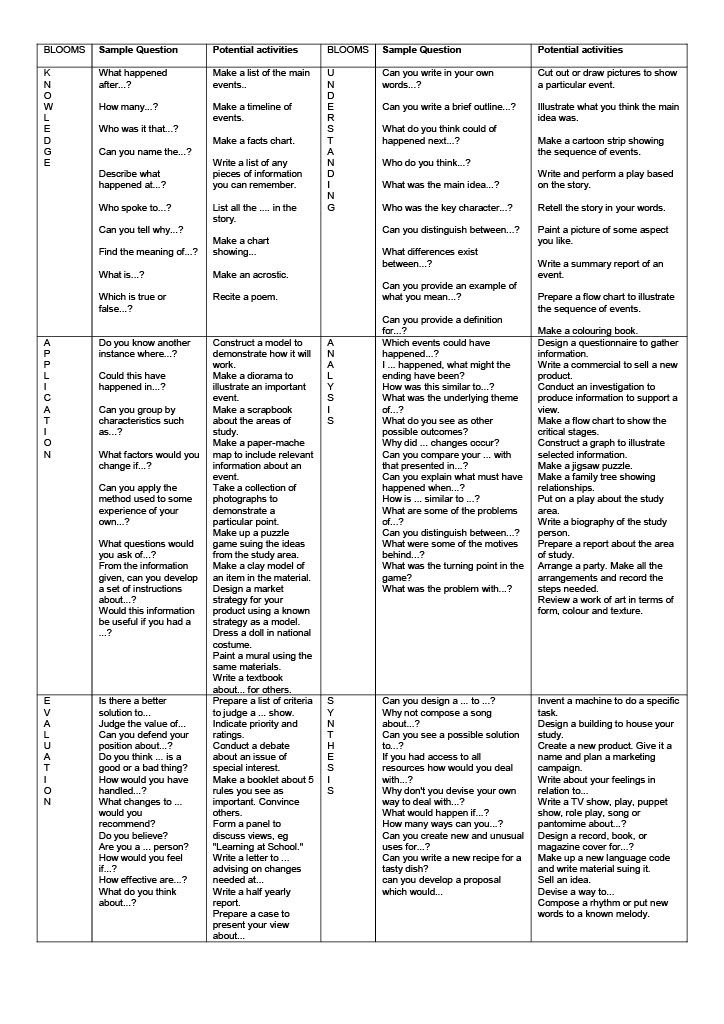Bloom's Taxonomy
- mrsstrickey
- May 26, 2020
- 3 min read

Bloom’s taxonomy is a classification system used to define and distinguish different levels of human cognition—i.e., thinking, learning, and understanding. Educators have typically used Bloom’s taxonomy to inform or guide the development of assessments(tests and other evaluations of student learning), curriculum (units, lessons, projects, and other learning activities), and instructional methods such as questioning strategies.
Basic knowledge, the first stage of learning, leads to the development of the skills and abilities that are crucial to completing the pedagogical process: Comprehension, application, analysis, synthesis, and evaluation. While there are subcategories within each, each stage lies on a continuum. The belief is that students move up through each level of the pyramid in Bloom’s taxonomy, starting from very basic learning, to acquiring deeper knowledge on a subject, with each level crucial to the development of the next.
Teachers can apply Bloom’s taxonomy by asking questions and delivering assignments that directly correlate with specific learning objectives in each stage of the process, making the objectives clear to the student. For example, posing multiple-choice questions can help gauge a student’s level of basic understanding and remembering of a subject, while asking a student to come up with a comparison or analogy points towards entering the application or analysis stage.
Bloom identified six levels of questioning, from the simple recall or recognition of facts, as the lowest level, through increasingly more complex and abstract mental levels, to the highest order which is classified as evaluation.
Examples of this are:
Evaluation: appraise, argue, assess, attach, choose compare, defend estimate, judge, predict, rate, core, select, support, value, evaluate.
Synthesis: arrange, assemble, collect, compose, construct, create, design, develop, formulate, manage, organize, plan, prepare, propose, set up, write.
Analysis: analyze, appraise, calculate, categorize, compare, contrast, criticize, differentiate, discriminate, distinguish, examine, experiment, question, test.
Application: apply, choose, demonstrate, dramatize, employ, illustrate, interpret, operate, practice, schedule, sketch, solve, use, write.
Understanding: classify, describe, discuss, explain, express, identify, indicate, locate, recognize, report, restate, review, select, translate,
Knowledge: arrange, define, duplicate, label, list, memorize, name, order, recognize, relate, recall, repeat, and reproduce state.
Complete each level of Bloom’s taxonomy before moving on to the next. When lesson planning, bear in mind the implications—how quickly to introduce new concepts, when to reinforce them and how to test them.
The first stage, remember, is about recalling facts and concepts. A student can define and duplicate, make a list, memorize points, repeat information, and make valid statements. But this does not prove comprehension.
This is where understand, the next level comes in. The student explains ideas and concepts, discusses and describes a topic in detail, explains what it means, recognizes it, and translates the facts in some way. They can paraphrase a point, or compare and contrast information.
Once this level is conquered, students move up the pyramid to the next stage of learning: apply. They use the information they’ve learned in new situations, whether it’s to solve a problem, demonstrate an idea, interpret, schedule, sketch—whichever method works for the specific type of learning, course of study, and/or class environment.
Then, they must draw connections between ideas in the analyse level of Bloom’s taxonomy and differentiate, organize, relate, compare, contrast, examine, question, or test their knowledge. Critical thinking finally comes into play, as the student distinguishes between fact and opinion, and breaks information down into component parts.
In the evaluate stage, the student can justify a stand or decision by appraising a situation, arguing, defending, judging, critiquing, supporting, or weighing in with thoughts based on the knowledge and application they’ve acquired thus far. In the original version of Bloom’s taxonomy, this was considered the pinnacle of learning. But in the revised version, as noted, Create (which Bloom originally called Synthesis) is at the top of the pyramid. There, students produce new or original work.

The taxonomy has been revised over the years and you may see:

Here are some examples of learnings objectives you could use in this version





Comments